The ASUS TUF X99 Sabertooth Review
by Ian Cutress on July 22, 2015 10:00 AM EST- Posted in
- Motherboards
- Asus
- TUF
- X99
ASUS TUF X99 Sabertooth Software
The regular set of bytes reserved for ASUS’ software falls in the lap of AI Suite 3, which we’ve covered at AnandTech numerous times before. The TUF line of motherboards is in most regards similar, with fast charging and USB boost technologies included, however the main feature is no longer overclocking. Rather than promote overclocking (even on an overclockable chipset and an OC socket installed), the focus for AI Suite is monitoring and control. As a result we get Thermal Radar instead of 5-Way Optimization:
In a similar context to 5-Way Optimization though, users can either go through each option manually and adjust to their liking or use a couple of clicks and let the system configure it all for itself. On the image above, the left hand side has all the temperature sensors with the three thermistor headers at the bottom for allocation:
Because two self-build systems are rarely alike, the software also allows the configuration of each fan placement within the chassis:
After a quick test, the software will produce appropriate fan profiles for each to minimize dead zones. If you accidentally happen to put a liquid cooling pump power connector into the CPU fan, you might get a fan profile like this:
After the system is finished, the user can fine tune each setting including Fan Overtime and Dust-de-fan:
With a compatible video card, the fan on the GPU can also be controlled with acceleration and deceleration (i.e. hysteresis) time allowing the heat generated during the game to be dispelled quicker at the end of gameplay.
ASUS offers an overall assessment of the cooling capabilities of the system, along with a rating:
Fan speeds, temperatures and voltage can also be recorded in the Recorder menu option:
Similarly to the BIOS and previous AI Suite implementations, we also get access to the digital power options. It might seem odd in this circumstance to include them, but reducing the impact of the power delivery can help in reducing overall temperatures.
ASUS is also using a skinned version of cFos for network management. This allows the user to prioritize the network usage of certain programs over others by either using the presets or manual adjustment:
A more detailed set of options, such as tracking overall bandwidth usage, is also present.
Other features in the ASUS software suite include:
AI Charger: Allows quick charging on BC1.1 compliant devices on certain USB ports.
USB 3.1 Boost: For suitable devices, implements a newer USB protocol to improve USB 3.0 and USB 3.1 speed.
EZ Update: Connect to the web to download updates. I’ve never had it work though.
System Information: Breakdown of the hardware specifications for motherboard, CPU and DRAM.
USB BIOS Flashback: Prepare a USB with a BIOS for updating, or save the current BIOS.
USB Charger: Allows for fast charging while in sleep/hibernate on certain ports only.
Push Notice: Setup a messaging system to another device in case of system errors.


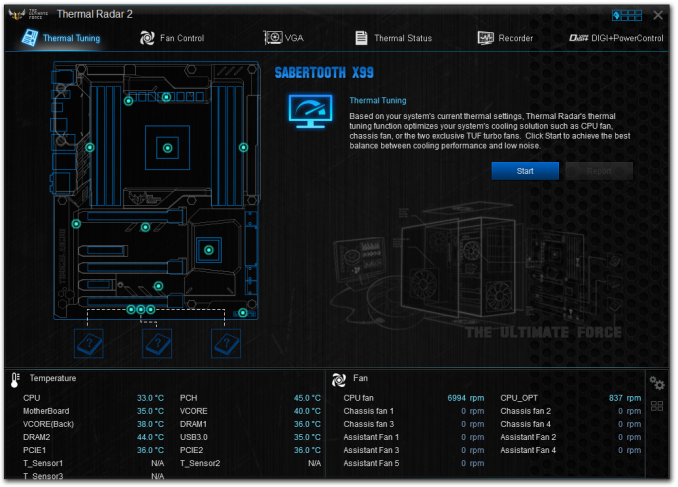
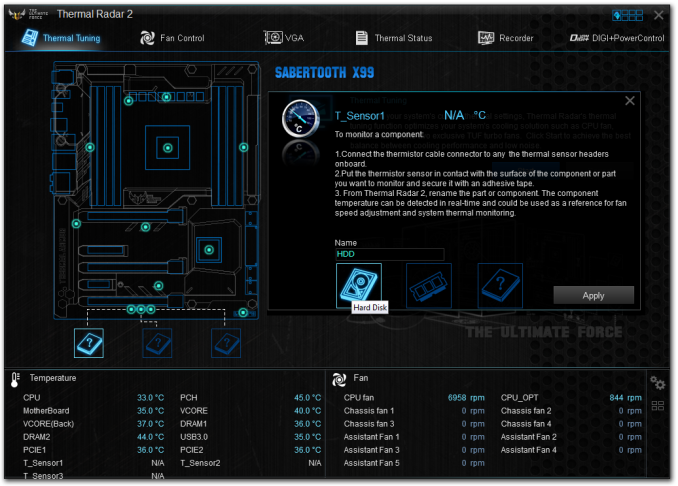
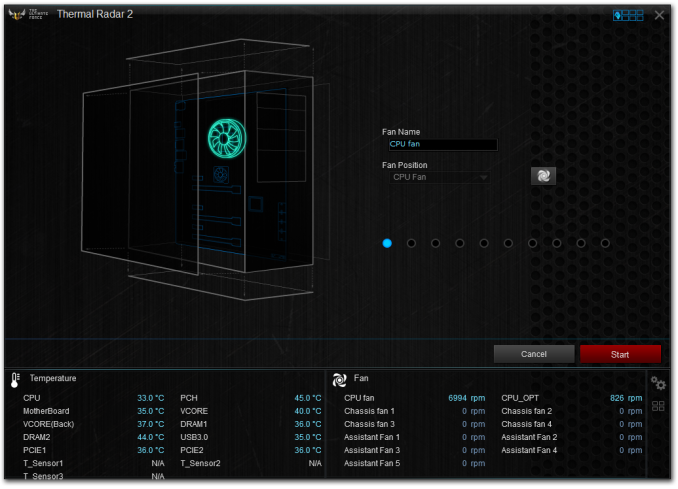
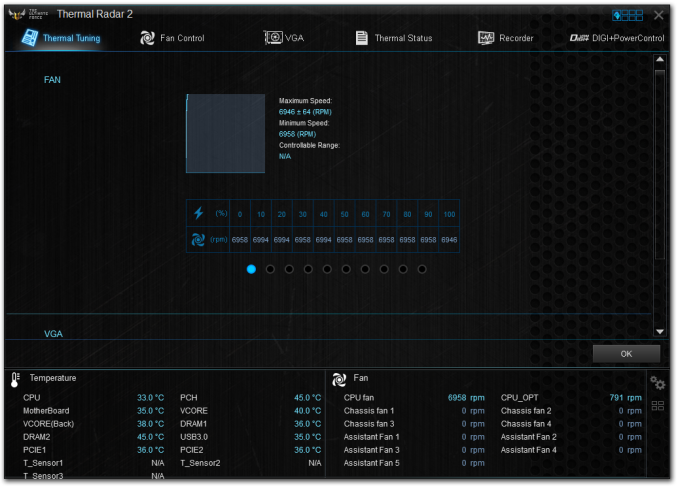
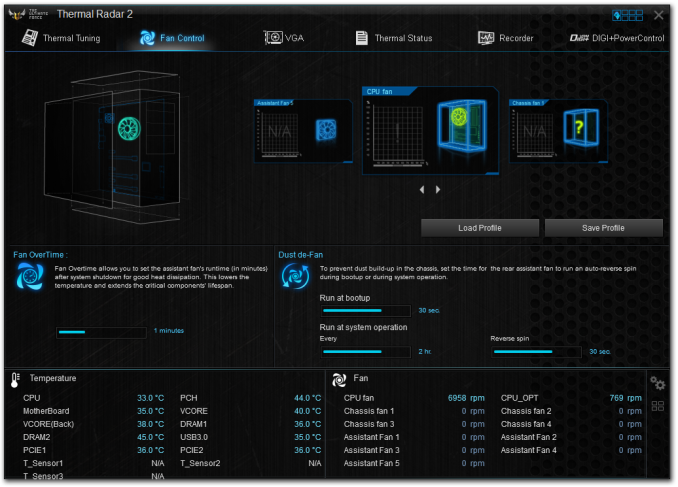
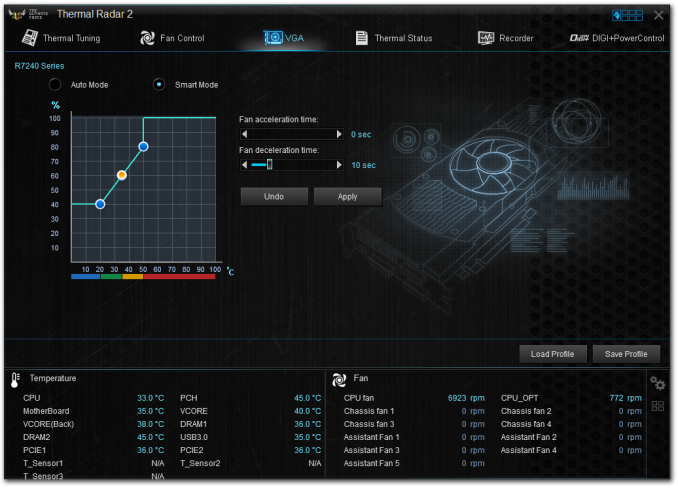
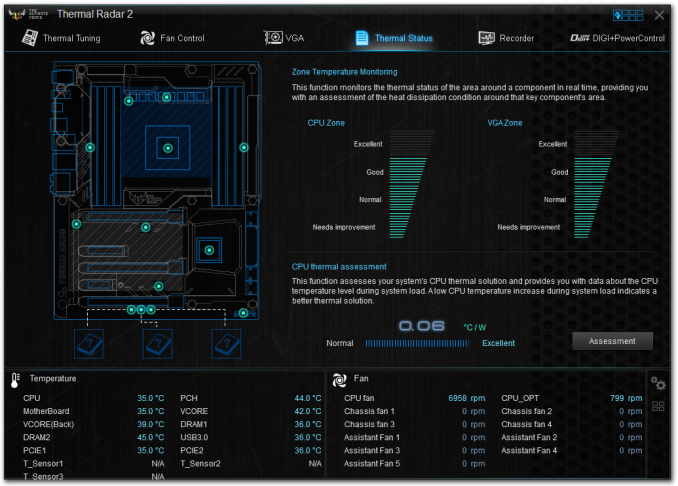
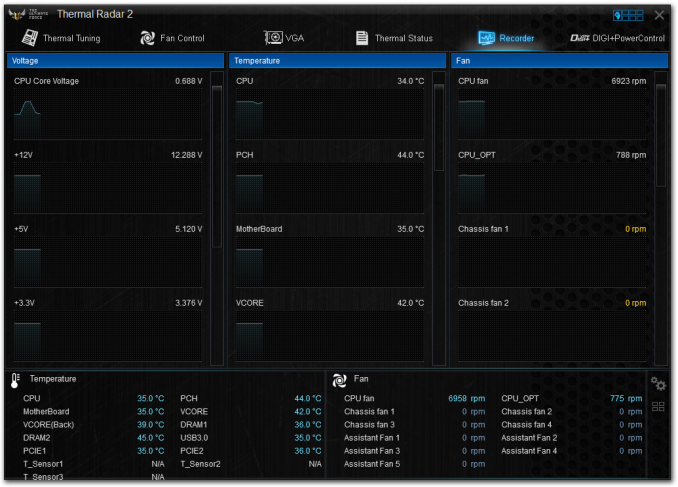
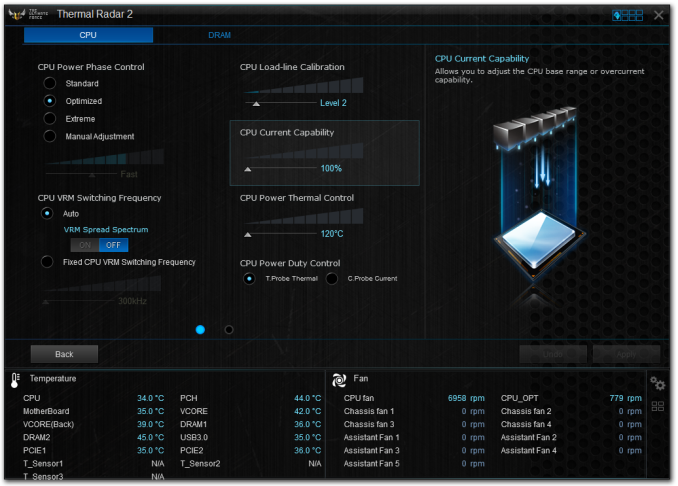
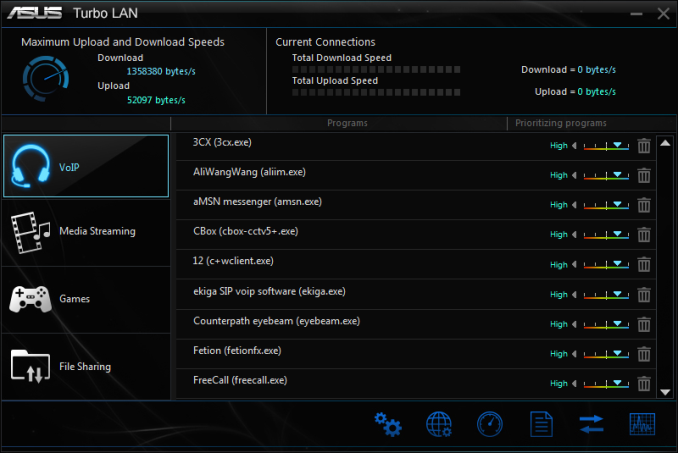
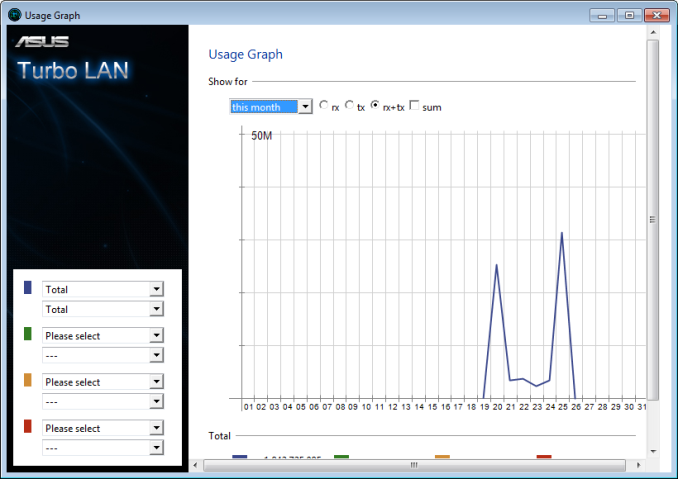














57 Comments
View All Comments
Shadowmaster625 - Wednesday, July 22, 2015 - link
lol it even has dust caps for the microphone port.Stuka87 - Wednesday, July 22, 2015 - link
Really a nice looking board. I like the PCI-E covers one slots you may not be using.Out of curiosity, why are you guys still testing with Windows 7 rather than 8.1? Will you guys be moving to Windows 10 soon?
AndrewJacksonZA - Wednesday, July 22, 2015 - link
As soon as it's commercially available and all benchmark software has been tested to make sure that they still work I hope. :-)Souka - Thursday, July 23, 2015 - link
What about Windows 8.1?abrowne1993 - Wednesday, July 22, 2015 - link
"It didn’t detect the DDR3 on the graphics card correctly though!"GDDR5?
Ryan Smith - Wednesday, July 22, 2015 - link
The R7 240 is a DDR3 card.Achaios - Wednesday, July 22, 2015 - link
@Staff: There is a rather huge issue with ASUS X99 motherboards destroying CPU's (5960X's, 5820k's, etc). Google "5960X Dead overclock.net".To my understanding, there is a chance that the ASUS X99 motherboard will raise on its own the CPU Vcore of the CPU to around 1.85V which, as we have learned, kills CPUs in a matter of seconds.
The latest incident reported was 4.5 hours ago. ASUS has refused to comment or acknowledge the issue. So, in view of the above, I would not buy an ASUS X99.
Achaios - Wednesday, July 22, 2015 - link
Correction: Latest incident reported 2 days and 8 hours ago on a "RVE", i.e. Rampage V Extreme X99. According to the person writing the report, he did try to RMA the board butQUOTE "ASUS were just dismissive and very unfriendly and said no".
Treating enthusiasts like dogs really angers me.
Gothmoth - Wednesday, July 22, 2015 - link
lol.... "enthusiast" who probably killed their system because they have no clue how to overclock.now they claim it´s a board problem. of course all x99 asus boards are affected.
i have SIX asus X99 boards and they run flawless for years.
an where is the source for the "incident" you reported?
without giving a source this is even more likr UFO sightings.....
Achaios - Wednesday, July 22, 2015 - link
http://www.overclock.net/t/1561131/5960x-dead